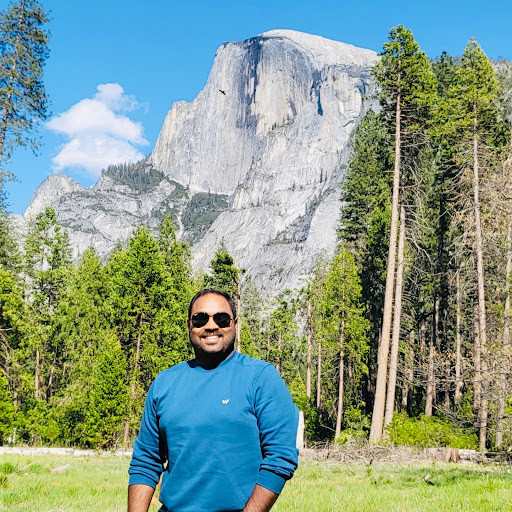The Hidden Force In EdTech: One SoftwareIEngineer's Global Impact On Special Needs Education

Many schools are actively working to better support neurodiverse students (children with autism, dyslexia, and other learning differences). But tools that truly accommodate these students' needs remain largely unavailable, which means children struggling with foundational skills like reading, writing, and speaking are left with systems that don't properly adapt to how they learn.
Software engineer Veera Malisetty dealt with this firsthand during his time at Square Panda, an ed-tech company focused on developing devices tailored to children with diverse learning needs. There, he created tools to improve engagement, including an AI platform that tracks student progress and helps educators adjust their teaching methods to better meet each student's unique needs.
Building Inclusive Learning Experiences
Veera Malisetty has built his career around a simple but powerful question: "Early in my career, I found myself endlessly asking 'How? How does this app or this technology really work? How can we make daily tasks simpler through technology?"
In 2018, Veera brought that curiosity to Square Panda, an edtech company dedicated to creating early learning tools like reading games and speech therapy apps. The company's mission centers on supporting neurodiverse children, a group often overlooked by mainstream providers of educational content.
As the company's global director of engineering, Veera worked to fix this by leading the development of hybrid learning devices that combined physical play with digital feedback. These multisensory tools (blending sound, visuals, and touch) were designed to help them strengthen foundational skills in ways that were more natural and engaging to them. He also coordinated cross-functional teams to pilot products, integrate Bluetooth-enabled devices, and expand their availability worldwide.
For Veera, this work wasn't only about building effective systems — it was about purpose. "For me, technology isn't just about building tools," he says. "It's about solving real problems that improve lives."
Architecting An Adaptive Learning Platform
One of Veera's biggest and most encompassing contributions at Square Panda was building an AI learning platform that aimed to give teachers real-time insight into the specific and unique ways that their students interact with reading and literacy tasks — helping them better meet each child's specific needs.
Veera oversaw the platform's development from start to finish. Some of the key aspects he led were:
- System Architecture: Designed the backbone of the platform so that it could collect and process data with no friction while retaining real-time responsiveness.
- Data Pipelines: Established methods to capture student interactions (from speed and accuracy to error patterns) with reliability at scale.
- Word Bank Creation: Oversaw the development of an internal library of 6,400+ words that were divided based on their curriculum levels and literacy goals.
- AI Models: Led the design of models that could detect behavioral trends like repeated confusion between phonemes or delayed response times.
- Ability to Scale: Introduced a modular SDK (software development kit) that allowed engineering teams to reuse components and seamlessly adapt the platform to suit multiple languages.
- Cross-Team Leadership: Coordinated engineering, product, and QA teams across geographies, which was crucial to aligning their work toward a single, scalable vision.
The Final Product: An App That Tracks Student Performance and Personalizes the Educational Experience
The end result works by having students access the Square Panda platform through secure tablets. Once logged in, they start playing one of 14 learning games, each of which is aligned to age-specific curriculum levels and focused on a core literacy skill such as letter recognition, phonemic awareness, or auditory discrimination.
The games combine on-screen prompts with audio cues, many of which include physical letter tiles that read sounds aloud when touched. This allows children to, for example, spell out words requested by the app using tangible letters, reinforcing their learning through both digital and hands-on interaction.
While these students are playing, the platform scans their behavior to track metrics like how quickly they complete each task, the number of attempts required, which activities were done correctly, and whether there were any recurring errors. For example, during a phonics game where students are shown words like "bat," "cat," "mat," and "sat" and are asked to choose the correct starting consonant, if a student repeatedly confuses similar sounds, the system would detect the pattern and update their profile accordingly.
This real-time data goes into a centralized classroom dashboard where teachers can track students' ongoing progress. With clear insight into their individual strengths and where they may be struggling, teachers can make tailored adjustments to their pre-existing lesson plans, reassign activities as needed, or allow the engine to recommend tasks. Additionally, they can generate detailed yet digestible progress reports, allowing parents to get a personalized view and a clearer understanding of their child's learning journey.
The result is a flexible and responsive system that can properly show how neurodiverse children learn while giving teachers the clarity to act with greater precision than before.
Making Adaptive Learning Practical and Accessible
Looking forward, Veera is keeping an eye on a new breed of systems that could adapt in real-time to complexity — whether in education, enterprise, or connected living. He envisions technologies that are context-aware, privacy-first, and could accurately anticipate needs rather than merely responding to them.
Equally, Veera is committed to building people as much as products. He sees mentorship, leadership, and empowering the next generation of engineers as central to his mission: "Innovation means more than coding; it means resilience, leadership skills, and empowering others. I strive to build not only products but also people and teams that can carry the vision forward."
By focusing on the needs of students and teachers alike, Veera Malisetty's work at Square Panda enabled children to receive more personalized learning experiences, helping schools provide more inclusive support to those who need it the most.
© Copyright IBTimes 2025. All rights reserved.



















